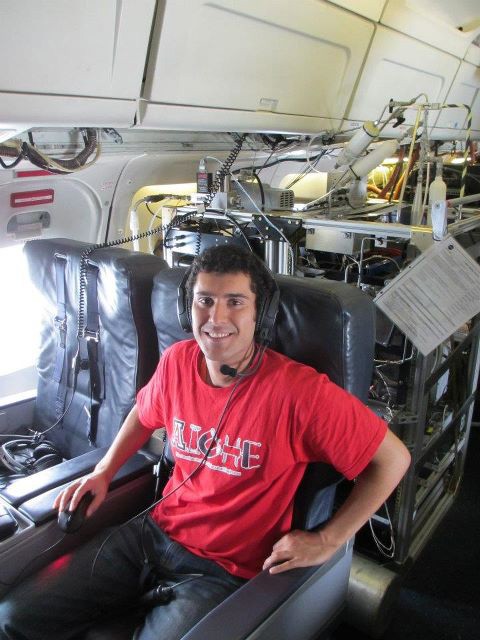UA Associate Professor of Chemical and Environmental Engineering Armin Sorooshian takes
the concept of a field trip to a whole new level. Together with his
graduate students, he travels over oceans and forest fires in a small
plane in order to study the effects of aerosols on our atmosphere.
Sorooshian is the recipient of the 2010 Office of Naval Research Young Investigator Program Award and the author of multiple publications regarding his study of airborne particles.
“One of the largest uncertainties in understanding how climate is
changing is related to these tiny little particles because we don’t
exactly know what they’re made out of, how big they are, or how they
move sometimes,” Sorooshian said.
Aerosols are tiny particles in the air produced either through the
processes of nature or by humans. However, though they might be small,
they can have a huge effect on the environment. According to Sorooshian,
these particles in the atmosphere reflect a extensive amounts of solar
radiation, causing the sunlight that would normally heat us to be
deflected back up into the atmosphere, in effect cooling us.
“Of the various radiative forcing agents on planet, or the things on
this planet that can either heat or cool us, particles are in fact
probably the most responsible agents in terms of cooling the planet.
Greenhouse gases heat us, but particles cool us,” Sorooshian said.
The study of aerosols is of particular interest to the U.S. Navy, who
have helped to fund Sorooshian’s research. The number of aerosols in
the air can directly impact the Navy’s ability to function, by causing
communication interference and issues with weapon positioning. Last May,
the U. S. Office of Naval Research granted Sorooshian a three-year, $500,000 grant to continue his studies.
RELATED: Featured Science: Critical Zone Observatory explores earth, atmosphere
Hossein Dadashazar, a UA graduate student in chemical engineering, speaks positively of his experience working on the atmospheric research plane with Sorooshian.
“It wasn’t the kind of commercial airplane experience where you just
need to sit in your seat and fasten your belt,” Dadashazar said. “We
needed to do a lot of action inside the plane and it’s kind of hard
because we flew for 4 hours, but it was a very interesting experience
because you get to direct the plane.”
Dadashazar attributes his success on his first flight in the research
plane to Sorooshian, who makes sure his students have the opportunity
to be involved in all aspects of the research.
“My students get a lot of training on how to run these instruments
and how to collect data. Sometimes the students even come on the
aircraft with me, so they’re involved with real time decisions, telling
the pilot where to go or to chase a particular feature in the atmosphere
that we think is interesting,” Sorooshian said.
In order to really study the particles, you have to be in a plane,
Sorooshian said. He and his team have developed instruments specifically
for aircraft, and during the summer they put them to good use. In the
summer of 2016, they used a small plane called a Twin Otter
to study the properties of the particles in the air. The plane itself
only had two propellers and moved at about 50 meters per second, making it much slower than a standard commercial jet, Sorooshian said.

Once in the air, the researchers direct the pilot to the areas they
hope to study. They then check the instruments and begin taking samples
for research. “For example, when we fly inside a cloud, we take a cloud
water sample, and we graph them and put them in a cooler to bring back
to the lab and analyze with the instruments we have in the lab,”
Dadashazar said.
RELATED: Grasslands imperiled by climate change
According to Sorooshian, aerosols have a
particular effect on clouds; a higher concentration of particles in the
air can cause a cloud to rain less or be more reflective, both of which
have consequences for the climate.
Particles in the air come from a myriad of sources, including waves
in the ocean, forest fires, deserts and human processes such as
combustion and construction. However, according to Sorooshian, man-made,
or anthropogenic causes, aren’t the biggest culprit in atmospheric
aerosol levels.
“I can tell you one thing — the natural sources of particles are very
abundant and they arguably account for a much higher amount of the
particles in the air as compared to man-made pollution,” Sorooshian
said, citing processes such as natural dust and sea salt emissions.
He further said that shouldn’t minimize the importance of man-made
emissions, as any type of emission can have a lasting impact on the
climate.
“It’s the key elements in the atmosphere that can play an important
role in global warming and global climate change,” Dadashazar said.
Follow Hannah Dahl on Twitter









